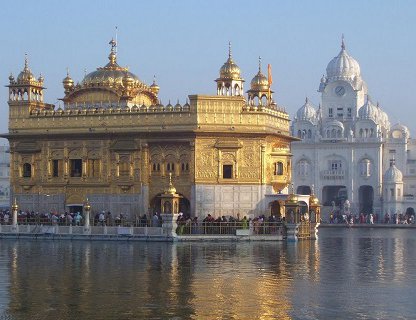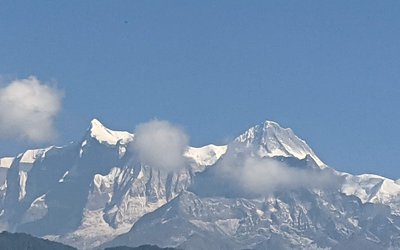
Having lived in the older part of Delhi for quite sometime now, I’ve loved the gallis, the typical food and although a bit irritating at times, the bustling crowd. The Golden city shared identical similarities. There were age old shops selling Lassis, Paranthas and Haluwa , food that Punjabis gorge on. The narrow and busy streets reminded me of Chandni Chowk where sometimes even walking becomes a Herculean task. I found a little Delhi inside the Sikh city, so to speak.
History Revived
The Golden Temple is the obvious attraction of Amritsar. But what many don’t know is that the city carries a huge baggage of history behind its back. During the time of India – Pakistan partition when Punjab was being divided into two parts, Amritsar became a major issue of conflict. It witnessed bloody riots and huge migration. Ultimately, the city went to the hands of Indians whereas another cultural city of Lahore, just 50 kilometers away, fell on the other side of the border. The city experienced major trauma even before independence. In the light of the freedom movement, the ‘Jallianwala Bagh massacre’ as it is famously known, caused the lives of more than 300 innocents when a senior British Army official ordered random firing into a peaceful sit in. Amritsar witnessed tragedy later in 1984 when its holy temple was completely destroyed under a military attack ordered by Indira Gandhi allegedly to capture Sikh ‘terrorists’. Visiting the Golden city, with such rich culture and history was high on my wish list.
‘Golden’ City
Amritsar hasn’t received the name ‘Golden City’ for nothing. Having reached the city, our first destination was of course its major tourist attraction, the Golden Temple. I had heard a lot about its splendor and exquisiteness. And true to its word; there were very few who weren’t bowled over its beauty. With moonlight above its head, the marvelous temple with its beautiful lighting glowed peacefully in the middle of a small pond, its image marvelously reflected on the water below. The ambience was calm and serene. While Sikh hymns blared out of speaker nearby and people posed in front of the temple, I continued to marvel at the temple’s beauty. Not a sprint of dirt or litter was seen anywhere. I was further amazed when I later found out that the responsibility for the maintenance of the temple was not taken by a single authority but by the Sikh people themselves, who volunteered their service, under the practice of ‘Seva’. As I went around viewing, one thing I noticed was how respectful the Sikhs were of their God and their religion. This was amply reflected in everyone. No wonder they live by the saying - Waheguru Ji Ka Khalsa, Waheguru Ji Ki Fateh (The Khalsa belong to God, Victory belongs to God).
The Parade
The Jallianwala Bagh was second on our list. As with many other historical sites in India, the site of Jallianwala Bagh massacre had also been preserved quite properly. The bullet marks on the walls are still to be seen. A look around the place still sends chills down one’s spines. I pondered as to how a brutal act as such could even be thought of. Leaving history behind, the India Pakistan border, or the Wagah border as it is famously known, was the last place on my list. The daily parade/ceremony which was initiated from 1959 as a symbol of friendship has attracted thousands of visitors to the place. But the glorious ceremony took place with such intensity and energy that rather than a symbol of friendship, one might actually mistake it for a beginning of a fresh fight. Given the intensity of Jawans and just out of the historical Jalllianwala, I feared some sort of massacre quite like it could take place anytime. No taking risks, I decided to head straight back home!
- Ukrainian Crisis And The World (Dis)Order
- Apr 22, 2022
- China’s Cautious Steps In The Graveyard Of Empires
- Aug 18, 2021
- Foreign Aid On The Fence!
- Aug 08, 2021
- Communist Party of China centenary celebrations Reading between the lips
- Jul 14, 2021
- Second Wave Of Covid-19 In India: Deadly Blow To The Economy
- Jun 23, 2021
















